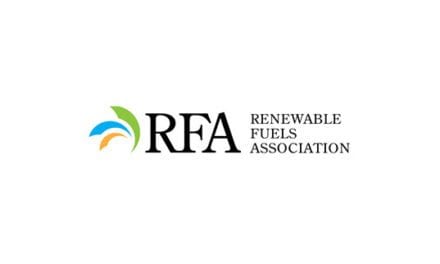Crude Oil Prices Fall Despite International Turmoil
In this week’s Market Update:
- ULSD appears to have reached a seasonal bottom
- International events continue to roil markets.
- Domestic refinery utilization continues at an intense pace, running at 93.5 % of capacity.
- Natural gas production reached 69.9 Bcf per day — a record rate. It is supply that is creating bearish conditions for natural gas prices.
Sincerely,
Alan Levine
Chairman, Powerhouse
The Matrix
Powerhouse noted last week that mid-summer is typically a bullish turning point for energy prices, reflecting preparations for winter demand. In particular ULSD appears to have reached a seasonal bottom.
Factors influencing markets this week are by now familiar. Warfare in Ukraine has led to sanctions coordinated between the United States and European nations. These include limitations on technology which Russia could use to explore the Arctic and develop shale oil reserves. The impact is expected to be more profound in the future.
Crude oil exports began last week with shipment of a cargo of crude oil condensate bound for South Korea. Condensate is likely to be the thing that opens the door to broader crude oil exports.
Libya remains an enigma. The state of crude oil production is unclear. Disputes among various militia groups continue to frustrate markets. Even if these problems are resolved, new problems have developed. One is the price to be charged. Libya seeks an over-market price reflecting the quality of its oil, but buyers are pushing back, citing the risk of further disruptions. And, of course, more oil on the market itself would push prices lower.
Supply/Demand Balances
Supply/demand data in the United States for the week ending July 25, 2014 were released by the Energy Information Administration.
Total commercial stocks of petroleum fell for the first time in a month, losing 0.5 million barrels last week. Supplies now stand at 1.129 billion barrels of oil. Current supply is 7.8 million barrels more than last year.
Commercial crude oil stocks fell 3.7 million barrels during the report week. This continues a reduction that began in early May when crude oil stocks were at 397.6 million barrels. Despite the decline, stocks are17.2 million barrels higher than they were at the start of 2014.
Declines were seen in the Midwest (-2.1 million barrels) and on the West Coast (-1.3 million barrels). Stocks at Cushing, OK were down 0.9 million barrels, moving to 17.9 million barrels. Stocks at Cushing are now at levels not seen since November 7, 2008.
Crude oil imports rose 337,000 barrels daily during the report week, averaging over 7.7 million barrels daily. Imports are down 5.0 per cent from the same four-week period last year.
U.S. crude oil production is 8.4 million barrels a day according to the latest report. This was a small decline week on week, representing loss of output in Alaska.
Refinery utilization rates fell modestly to 93.5 percent. Utilization was unchanged on the East Coast. Midwest refineries could not sustain utilization at more than 100 per cent. Rates fell for the second week, now down to 97.4 per cent. Crude oil inputs to refineries fell marginally to 16.6 million barrels per day.
Gasoline production was unchanged at 9.3 million barrels per day. Demand recovered to 9.0 million barrels per day. Demand continues to be very volatile this summer driving season. The 4 week average is just below 9 million barrels per day.
Gasoline added to stocks contra seasonally. Inventories moved up by 0.4 million barrels to 218.2 million barrels. Almost all of the increase occurred on the Gulf Coast (+0.5 million barrels.) West Coast stocks lost 1.3 million barrels from supply.
Distillate fuel oil supplies added 0.8 million barrels during the report week. The increases were seen largely on the East Coast (+1.7 million barrels) . Supplies in the U.S. have now barely exceeded last year’s levels. Nonetheless, distillate stocks continue to hug the lows of the five year range of inventories.
Distillate fuel oil demand reached 3.8 million barrels daily. Refinery production of distillate fuels remains over 5.0 million barrels per day.
Propane inventories added another 1.8 million barrels in the U.S. The gains in inventory are typical for this time of year. Total stocks are 67.2 million barrels. Midwest stocks were up 0.8 million barrels. Inventories there are now above 22.4 million barrels.
EIA recomputed exports as they do each month. Product exports overall rose about 400,000 barrels per day The gains were notable in distillate fuel oils (+440,000 barrels daily) and propane (+134,000 barrels daily.) The increase in propane exports was 44.5 per cent.
Natural Gas
According to the EIA: Working natural gas in storage rose to 2,307 Bcf. The net injection reported for the week ending July 25 was 88 Bcf, 42 Bcf larger than the 5-year average net injection of 46 Bcf and 31 Bcf larger than last year’s net injection of 57 Bcf. Working gas inventories totaled 2,307 Bcf, 530 Bcf (18.7%) less than last year at this time, and 641 Bcf (21.7%) below the 5-year (2009-13) average.
Fourteen weeks remain until October 31 when the injection period traditionally ends. EIA puts the five year average underground storage of natural gas at the end of October at 3.851 Tcf. It requires weekly injections to average 110 Bcf to reach that level.
Cooling degree days have failed to materialize significantly this summer. National Weather Service data for the year to date show the United States lagging last year by 52 CDDs. In the Northeast, New England lags by 152 CDDs and the Middle Atlantic states lag by 149 CDDs. These data help explain why natural gas storage is recovering so rapidly from low levels at the start of the injection season.
Natural gas production has been growing steadily, establishing monthly records. The United States produced 69.9 Bcf per day in May. The Energy Information Administration notes this is the highest ever recorded. Price softness reflects this dramatic increase in supply; demand actually grew despite the failure to produce significant CDDs. Demand rose in May, a 5.6 per cent increase in power consumption leading the way.
Futures trading involves significant risk and is not suitable for everyone. Transactions in securities futures, commodity and index futures and options on future markets carry a high degree of risk. The amount of initial margin is small relative to the value of the futures contract, meaning that transactions are heavily “leveraged”. A relatively small market movement will have a proportionately larger impact on the funds you have deposited or will have to deposit: this may work against you as well as for you. You may sustain a total loss of initial margin funds and any additional funds deposited with the clearing firm to maintain your position. If the market moves against your position or margin levels are increased, you may be called upon to pay substantial additional funds on short notice to maintain your position. If you fail to comply with a request for additional funds within the time prescribed, your position may be liquidated at a loss and you will be liable for any resulting deficit. Past performance may not be indicative of future results. This is not an offer to invest in any investment program.Vol. PH 03 NO. 31Was this memo helpful? We’d like your feedback.
Please respond to [email protected]
Copyright © 2014 Powerhouse, All rights reserved.












